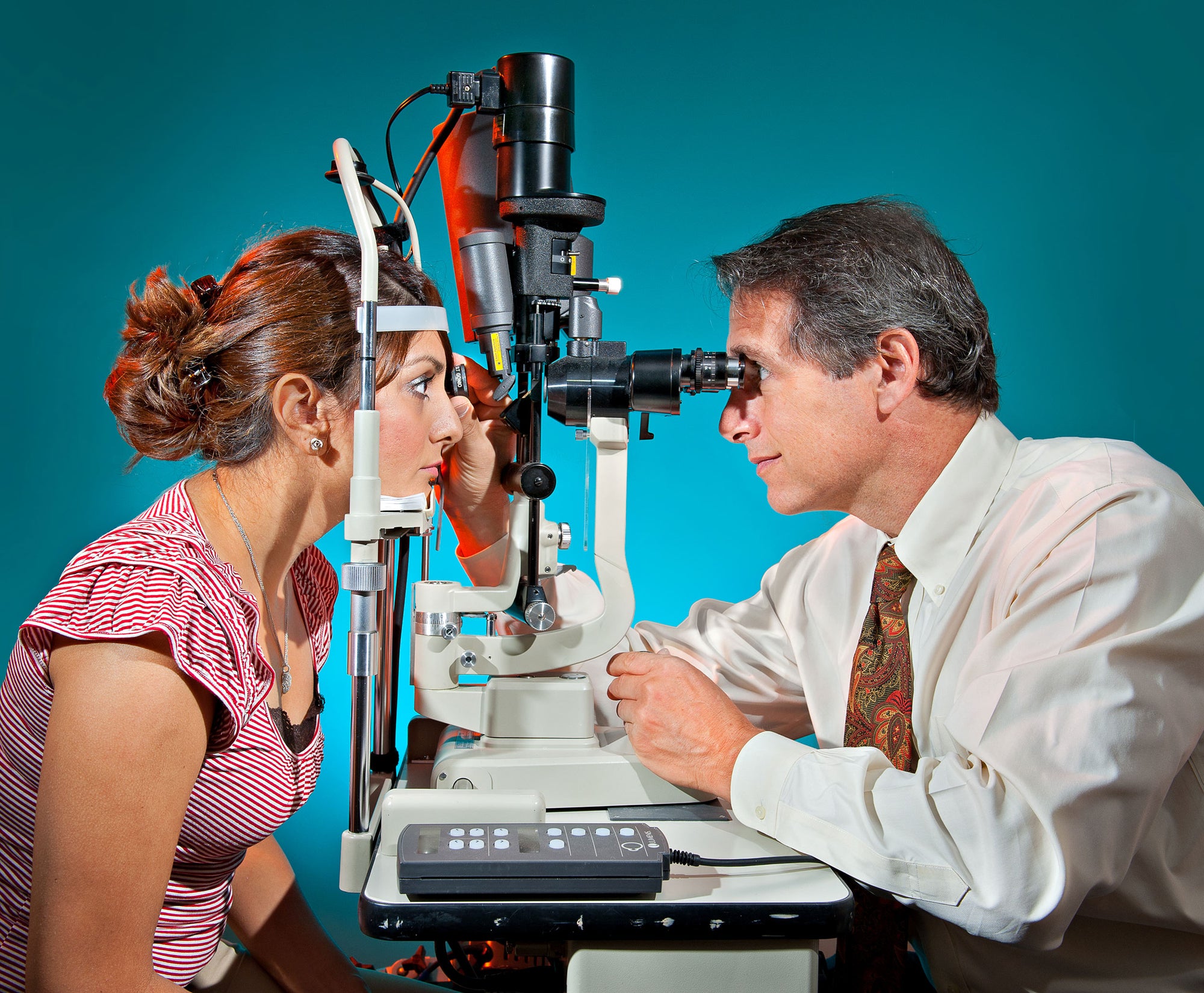People usually think that "glaucoma" is only one disease. But in actuality it encompasses many forms. And one of the most interesting and common forms is known as pigmentary glaucoma.

What Causes Pigmentary Glaucoma?
The back of the iris (the colored part of the eye) is coated with dark chocolate colored pigment - even in people with blue eyes. In some people, and especially people who are near-sighted, the iris can be bowed backward rather than flat. When that happens, the dark pigment can chafe from rubbing on structures behind known as zonules, which are the support cables for the natural lens inside the eye.
The pigment particles rub off the iris, sometimes resulting in transillumination or see-through reflection, as shown in the image above. The pigment that scrapes off then deposits itself on the back of the cornea, where a Krukenberg Spindle can be seen. But more importantly, the pigment will deposit in the trabecular meshwork in front of the iris. The trabecular meshwork is the structure that filters fluid OUT of the eye, helping to regulate internal eye pressure. It is the pigment clogging of the trabecular meshwork that can cause the eye pressure to rise.
When the pigment chafes off the iris without elevating eye pressure, the condition is known as pigmentary dispersion syndrome. When the condition is associated with elevated eye pressure, it is known as pigmentary glaucoma.
It is believed that pigmentary dispersion syndrome and pigmentary glaucoma are caused by a mechanism known as "reverse pupil block," in which fluid gets preferentially trapped in front of the iris, which pushes the iris backward. Although men and women develop pigmentary dispersion syndrome in equal numbers, men develop pigmentary glaucoma much more commonly than women by a 3:1 margin. In some patients, there is a genetic risk. And some exercise that jostles the eye, such as jumping or running, can suddenly and sporadically elevate eye pressure by causing more pigment to shed.
Laser iridotomy, which is often recommended for narrow angle and narrow angle glaucoma in which the iris is bowed forward, can actually often be helpful in this condition in which the iris is bowed backward in stopping the pigment chafing.
Other treatments for pigmentary glaucoma include glaucoma prescription eyedrops and selective laser trabeculoplasty. When pigmentary glaucoma remains uncontrolled, glaucoma surgery may be necessary.













